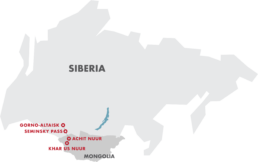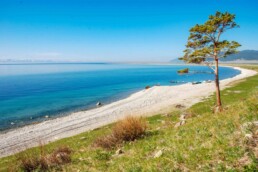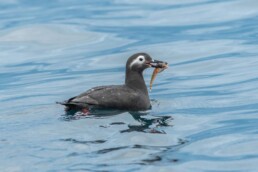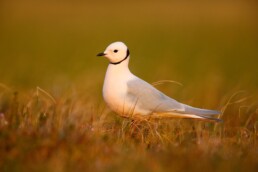ADVENTURE.
BEAUTY.
CHALLENGE.
This exciting tour takes us to one of Central Asia’s most impressive mountain ranges – the Altai Mountains. We combine three unique biomes to cover some of Central Asia’s most incredible species. We begin the tour in the fertile farmlands of the South-Siberian lowlands. Heading south, we move into the rugged peaks of the Altai Mountains, home to various rare avifauna. Finally, we reach the steppes of Mongolia. The unique position of the Altai region, at the junction of eastern and western Palearctic species ranges, together with a great diversity of habitats, creates a special offering for any naturalist.
This tour is a birdwatcher delight with loads of avifaunal treasures passing through our viewfinder. Top birds include Swan Goose, Asiatic Dowitcher, Oriental Plover, Altai Snowcock, Relict Gull, Pallas’s Fish-Eagle, Siberian Thrush, Daurian Jackdaw, Ural Owl, Henderson’s Ground-Jay, Mongolian Lark, Kozlov’s Accentor, Pallas’s Rosefinch, Pallas’s Bunting, Godlewski’s Bunting and lots more!

TOUR HIGHLIGHTS
Four core moments you'll never forget
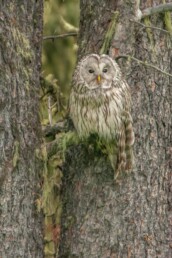
Travel through the diverse park landscapes of the Russian Altai, a brilliant scenery which is among the finest in Siberia.
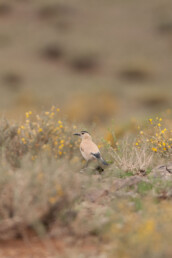
Seven nights of comfortable camping under the Russian and Mongolian sky, far away from any civilization, with Turkestan Ground-Jay as neighbour!
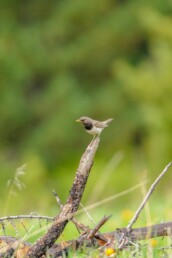
Enjoy the thrill of birding the Siberian wilderness, the biome of the Russian Taiga is full of splendour. Relish the gorgeous Black-throated Thrush!
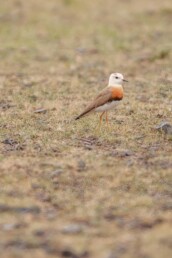
Be amazed by the sheer vastness of the Mongolian steppe, filled with large flocks of Pallas’s Sandgrouse and Oriental Plovers.

EXPEDITION TEAM
Rubythroat owner and expedition leader Machiel Valkenburg lead our Russia and Mongolia venture. He has travelled and led expeditions into Russia and Mongolia countless times. His love for Russian culture and wildlife makes him the perfect person to travel into the wilderness of the great unknown of the Russian taiga and Mongolian vastness.
YOUR
RUSSIA
ITINERARY
The tour starts with an international flight from your home city to the capital of Russia, Moscow, followed by a domestic flight bringing you to the small provincial town of Gorno-Altaisk.
NIGHT | On aircraft.
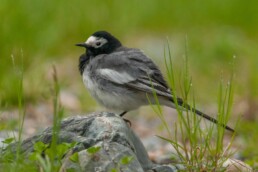
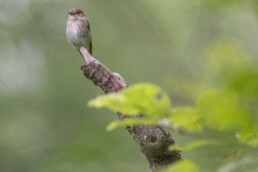
After arriving early morning at the Gorno-Altaisk Airport, you will meet up with your RBT tour leader who will accompany you for the duration of this excellent birdwatching holiday. We leave Barnaul and take a long drive along the Chuy Highway to the Seminsky Pass (195 km). Seminsky Pass is the highest point on the Chuy Highway, reaching 1,717 metres above sea level. After arrival, we will undertake an afternoon excursion to the slopes of Mount Vershiina Tiyakhtii. We will likely come across some of the commoner species of the Siberian boreal coniferous forest, such as Ural Owl, Spotted Nutcracker, brandtii Common Jay, Eversmann’s Redstart, Willow Tit, sayanus Siberian Tit, Crested-honey Buzzard, Swinhoe’s and Pin-tailed Snipes, Olive-backed Pipit, Altai Accentor, Black-throated Accentor, Hume’s and Dusky Warblers, Pallas’s Grasshopper Warbler, Red-flanked Bluetail and many lovely Black-throated Thrushes. The big target bird for Seminsky is one of the most illustrious rosefinches of Asia – the Pallas’s Rosefinch!
NIGHT | Wooden lodges at Seminsky.
We start with some early birding before breakfast at Seminsky, where we hope to see more of the previously mentioned species. After breakfast, we will depart towards the Tiid-Tujariik Valley, located in the Chuya Steppe. Birding en route, we will be on the lookout for Hill Pigeon, Pale Sand Martin, Rosy Starling, Daurian Jackdaw, Isabelline Wheatear, Eastern Goldfinch, Godlewski’s Bunting, Siberian Meadow Bunting, Saker, and the gorgeous Demoiselle Crane. We will drive over the Chicke-Taman Pass (1,295 m), with a stop at the observation point. Here we may hear the fantastic song of the Siberian Blue Robin. Other sightings could include more Red-flanked Bluetail and Dusky warblers. Along the road, we will see several high cliffs inhabited by Eurasian Crag Martins and Lesser Kestrels. In the village Aqtash, we will make a stop for our permits to visit the border zones with Mongolia. To quote Dostoevsky, “you get nowhere in Russia without documents”. We will undoubtedly make additional stops along the way as we spot raptors perching on telegraph poles (lots of Imperial and Steppe Eagles, Saker and Peregrine Falcons). In the evening we will arrive at our yurt camp near the Tiid-Tujariik River.
NIGHT | Yurt camp at Tujariik.
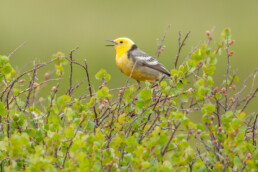
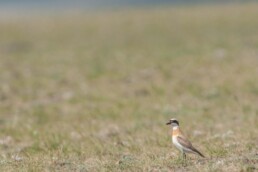
Today we have a long drive through the Chuya Steppe to the ruins at Beltir, and then upwards into the mountains. Along the road, we will make stops at several spots to watch Booted and Barred Warblers, Greater Sand Plovers, Red-billed Choughs, Pied and Isabelline Wheatears, Horned and Greater Short-toed larks, Rock Petronias, Pere David’s Snowfinches, and Desert Wheatears. Lunch will be served in the fields near a colony of wise Pere David’s Snowfinches. The village of Beltir is all but abandoned, the result of a disruptive earthquake in 2003, meaning many of the empty barns and houses have become inhabited by birds. This area is an excellent place for Eastern Black Redstart, Brown Accentor, Pied Wheatear, Twite, and Red–billed Chough. Our destination in the mountains is situated at an altitude of 2,205 metres, which is 260 metres higher than Beltir. Target birds in this area are White-winged Snowfinch, Brown and Altai Accentors, Golden Eagle, and Upland Buzzard. Today in the steppe areas we may also encounter Black Stork, Demoiselle Crane, Steppe Eagle, Imperial Eagle, Isabelline Shrike, Brown Shrike, Rosy Starling, Daurian Jackdaw, Alpine Chough, Pallas’ Sandgrouse, Horned Lark, Richard’s Pipit, and unreal Mongolian Finches.
NIGHT | Yurt camp at Tujariik.
Early this morning we will make the drive to the mountains of Tabozhok, along the Tabozhok river valley. Here we will search for White-winged Redstarts, Crag Martins, Brown and Himalayan Accentors, Plain and Brandt’s Mountain Finches, Great Spotted Rosefinch, and Lammergeyer. Altai Snowcocks may also be heard or even seen from the bottom of the valley. Those who are ready to climb higher can make a safe, but long ascent to the top of the ridge for closer looks at the Snowcocks, and several other high-altitude species. The valley slopes are covered in Larch forest inhabited by Red-throated Thrush, Rufous-backed Redstarts, Hume’s and Greenish Warblers. In the afternoon we will bird the marshy areas in the former riverbed of the Chuya River, not far from our campsite. Here we could find Whooper Swan, Smew, Goldeneye, Scops Owl, Rufous-tailed Rock Thrush, Azure Tit, Long-tailed Rosefinch, and also White-crowned Penduline Tit.
NIGHT | Yurt camp at Tujariik.
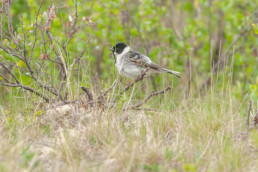
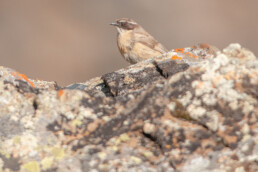
Today we will transfer to the high-altitude Lake Kindiiktiikul. Before our morning departure, we will scour a bushy area near the Tujariik River, and scan the swampy plains near Kosh-Agach. Here we can usually find Long-tailed Rosefinches, Azure Tits, Taiga Flycatcher, Yellow-browed Warbler and Blyth’s Reed Warbler. The translation of Kindiiktiikul in the Altai language means ‘lake with the navel’, a small island in the lake’s centre is the reason for this. It serves as a safe nesting site for Mongolian Gulls and Willow Grouses. At the lake, we may find Whooper Swans, Arctic Loons, Bar-headed Goose, White-winged Scoters, Red-breasted Mergansers, Yellow-billed Choughs, Horned Larks, and Citrine Wagtails. Along the road near the lake, several raptors are possible, including Lammergeyer, Black Vulture, Golden and Steppe Eagles, but also flocks of Pallas’s Sandgrouse. After arriving at the lake, we will do some final birding nearby, while our crew sets up our tented camp ready for the evening.
NIGHT | Tent camp at Kindiiktiikul.
Today we have a great walk planned along the Nariin-Gol River to the three lakes situated near the Bogutii Mountain Range. Our focus for the day are finches: Plain Mountain Finch, Brandt’s Mountain Finch, Asian Rosy-Finch, and kobsensis Spotted Great Rosefinch. We may also come across Rock Ptarmigan, Siberian Stonechat, Sulfur-bellied Warbler, Blyth’s Pipit, Himalayan Accentor, Brown Accentor, Güldenstädt’s Redstart, and more Twite. Even Altai Snowcock is possible here. In the evening we will return to our camp and spend our last night on Russian soil before moving to Mongolia.
NIGHT | Tent camp at Kindiiktiikul.
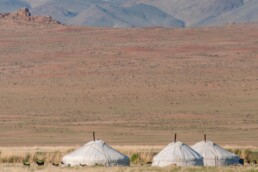
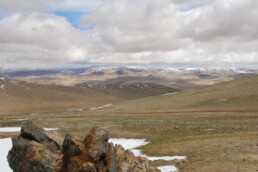
Today we need to do our best to depart from Kindiiktiikul as early as possible to reach the border before the queue. Even if we arrive promptly, the estimated time to cross the border is nearly 7 hours! As such, there is not much time for birding today. However, while waiting for our turn, we can do some birding near the border which could yield several common species such as Red-billed Choughs, Little Ringed Plovers, Hill Pigeons, Brown Accentors, Northern-, Pied- and Isabelline Wheatears, and some raptors. After crossing into Mongolia, we will head east towards Achit-Nuur. We will spend our first-night camping in the semi-desert. These plains are the perfect habitat for the illustrious Mongolian Ground Jay, and the next morning will be entirely devoted to finding this unique bird.
NIGHT: Tent camp near Achit-Nuur.
From dawn, we will begin to scan our surroundings for the ground jay. In this area, we may also see big flocks of Pallas’s Sandgrouse, Daurian Partridge, Greater Short-toed Lark, Barred Warbler, Isabelline- and Brown Shrikes, Rock Petronias, and Mongolian Finches. The unique habitat here is reflected in the avifauna we encounter. After breakfast (and hopefully excellent views of the ground jay!), we continue the drive to Lake Achit-Nuur. Here, in the swampy areas, overwhelming amounts of waders and ducks can be found breeding. The most interesting among them is arguably the stunning red Asian Dowitcher and elegant Long-toed Stint. Here we are also in search of the mighty Pallas’s Sea Eagle, Little Crake, Pallas’s Gull, and Lesser Short-toed Lark. One side of the lake is covered with colossal reed beds which are surrounded by rocky hills. Here we will make our camp for the night. Our neighbours could be Savi’s Warbler, Paddyfield Warblers, Great Reed Warblers, halimodendri Lesser Whitethroats, Bearded Reedlings, Thick-billed Reed Buntings, Pallas’s Reed Buntings and Grey-necked Buntings – better than any five-star hotel!
NIGHT | Tent camp at Achit-Nuur.
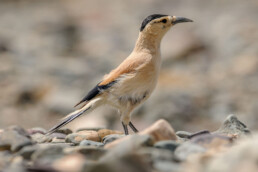
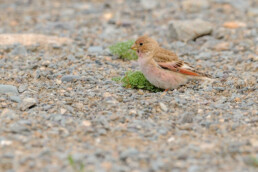
After some early birding at the lake, we will have a field breakfast before continuing on our journey. Today we have 200 km of bad road to overcome and a crossing of the Shovergol River, before finally arriving in the evening at our destination on the shore of Lake Khar-Us-Nuur. “Khar-Us” in Mongolian means “black water”. The dark-colouring of the lake water is due to the presence of organic compounds and high levels of plankton. As a result, the lake is abundant with fish. We will bird several small, but gorgeous lakes abundant with waterfowl such as grebes, egrets and herons, swans, ducks, and avocets, en route. We will arrive at Khar-Us-Nuur Lake in the early evening. Here we may find our first Mongolian Larks!
NIGHT | Tent camp at Khar-Us-Nuur.
We start the day birding the nearby hills looking for Asian Desert Warblers, Isabelline Shrikes, Desert Wheatears, and the famous Kozlov’s Accentor. Closer to the water, we can see Greater- and Lesser Sand Plovers, Terek Sandpipers and more Asian Dowitchers. On the lake itself, Swan Goose, Bar-headed Goose, White-winged Scoter, and the rare Relict Gull may be observed foraging. Large numbers of Pacific Swift and Rose-coloured Starling are regularly observed in this area. Another big target is conveniently located a short distance from our camp – the dazzling Oriental Plover! In this perfect steppe habitat, we may encounter more Upland Buzzards, Kentish Plovers, Lesser Sand Plovers, Long-Toed Stints, Pallas’s and Relict Gulls, Pallas’s Sandgrouse, big flocks of Demoiselle Cranes, and even Henderson’s Ground Jays. After birding at the salt lake, we will drive back to our camp at Khar-Us-Nuur.
NIGHT | Tent camp at Khar-Us-Nuur.
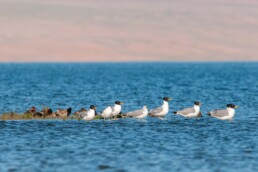
Today will be a day of driving as we head back towards the Mongolian-Russian border. If we make good time today, we should reach Lake Tsagaan-Nuur – the closest lake to the border. Here we could see Arctic Loon, Whooper Swan, a variety of ducks, Terek Sandpiper and Red-headed Bunting.
NIGHT | Tent camp at Tsagaan-Nuur.
Today we must undertake the border crossing once again. The plan will be to line up at customs as early as possible, however, it could still take up to 7 hours to cross. Once back in Russia, we will return to the good old “Tujariik” yurt camping. Before dinner, there is the option to rest up or visit a lovely Poplar grove nearby for some birding. The famous Russian sauna is waiting for us after dinner – the perfect way to relax after a long day.
NIGHT | Yurt camp at Tujariik.
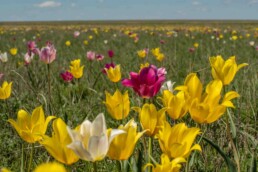
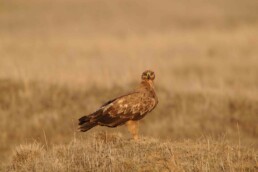
Today we will be searching for any species we have so far missed. Another option will be to do some birding near Uzunkyol Lake and Katu-Jariik Pass where Booted Eagle, Siberian Thrush, Red-throated Thrush, and the mysterious Siberian Jay are all possible.
NIGHT | Wooden lodges near Aqtash.
Today we transfer back to the Seminsky Pass. Our route will be the same as the one we took to get to the Chuya Steppe. On the way back we can spend more time birding at Beliy Bom looking again for Godlewski’s-, Meadow- and Pine Buntings, Pied Wheatear, Siberian Stonechat, and Goldfinches of the subulata race. A short walk at the Chicke-Taman Pass for Red-flanked Bluetail, Siberian Blue Robin, Oriental Cuckoo, Greenish-, Hume’s- and Blyth’s Reed Warblers, is also on the cards. During the drive expect to see loads of raptors such as Lesser Kestrels, Upland Buzzards, Imperial- and Steppe Eagles and Saker Falcons. There should also be enough time for an afternoon birding session in the coniferous forest on the slopes of Tiyakhtii Mountain at Seminsky. Here we can go after species like Pallas’s Rosefinch once more.
NIGHT | Wooden lodges at Seminsky.
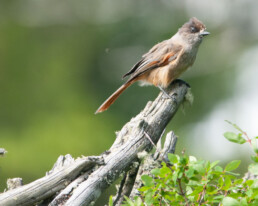
Today will sadly be the last of our fantastic birdwatching adventure. After an early morning departure from Seminsky Pass, and 2-3 hours on the road, we should reach the city of Gorno-Altaisk in the late afternoon. We will enjoy a grand final dinner before spending our last night in Mother Russia.
NIGHT | Comfortable tourist hotel.

In the morning we will depart for the Gorno-Altaisk Airport where we say our farewells and depart for home.
NIGHT | On aircraft

CLICK ON THE IMAGE TO ENLARGE
NEXT TOUR
No scheduled departure
Cost | $4.000
Single supplement | $450
Deposit | $800
Group size | minimum 6 and maximum 12
Best-time | May-June
Leader | Machiel Valkenburg
MORE RAPTORS THAN EVER!
Our tour into the Altai regions of Russia and Mongolia will pass bounteous landscapes and exciting habitats. Our focus will lay on finding the many compelling raptor species. Throughout the journey, we come across a bunch of Aquila raptors where the Eastern Imperial Eagle will be most common in the Russian part of the Altai. While we traverse the park landscape in Altai, we are accompanied by heaps of sightings of this mighty endangered eagle. Days with over sixty sightings are common.
More sightings will include Steppe Eagle (as in the image), Booted Eagle, Saker Falcon, and Lesser Kestrel. In Mongolia we will find that Eurasian Griffon Vulture, Cinereous Vulture and Long-legged Buzzard are seen daily. Rare records but still seen are Greater Spotted Eagle and the massive Pallas´s Fish-Eagle.
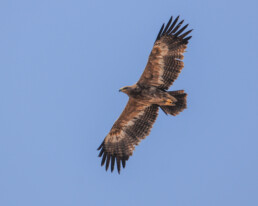
What’s Included?
Expert English-speaking Rubythroat leader
All accommodations
All meals
All land transfers by comfortable 4WD cars.
Domestic flight Almaty-Astana
Visa support (if needed)
What’s Excluded?
International flight to/from Russia.
Personal expenses; laundry, telephone costs etc.
Alcoholic drinks.
Sleeping bag
Extra rooming not mentioned in the itinerary.
Meals on day one.
Single room supplement.
ABUNDANT DESERT WHEATEARS
OUR BIRDERS IN MONGOLIA
ROSY STARLINGS IN FLIGHT
READY FOR YOUR NEXT ADVENTURE?
Reserve your spot on our RUSSIA & MONGOLIA birding expedition now.


